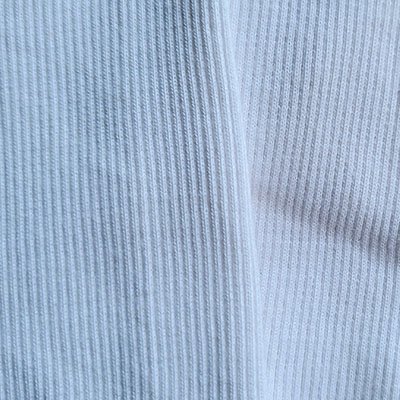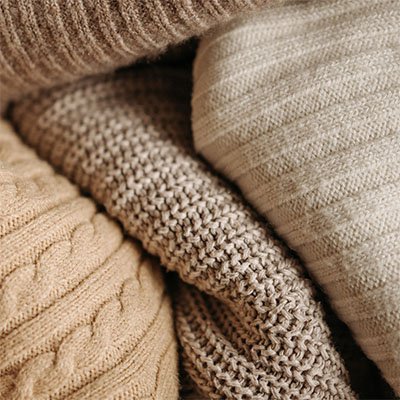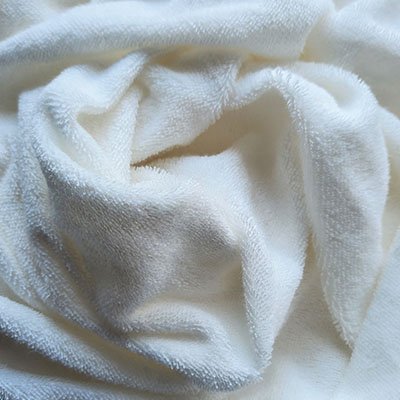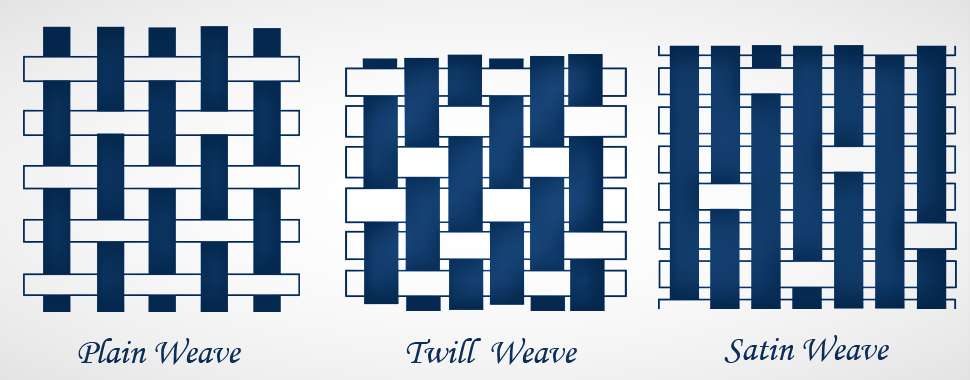Knit fabric is produced by a single yarn which is looped and interlocked together. There are two categories – warp knitting where the loops run up and down and weft knitting where the loops run back and forth. While Woven fabric is where threads or yarn are interlaced together. If you look closely at a woven fabric, the threads have a perpendicular crisscross pattern – instead of loops.
Knitted Fabric
Most knit fabric is soft, wrinkle resistant and stretches all over – think of your typical t-shirt material which is commonly made out of cotton or viscose.
Here are some examples of knitted fabric;
Jersey Knit
Originally made from wool, nowadays jersey knit can be made from different fabrics such as cotton &/or synthetic fibres. Typical Jersey fabric is usually made on a knitting machine and has a distinct face and back. The face side is characterized by knitted loops which look like rows of v’s and the back side has flat purl stitch, which looks like small curves or bumps. Jersey knit is soft and flexible and used for many different kinds of garments.
Terry towel / terry cloth
Your typical towelling fabric which is super absorbent. It has loops on one side and piles of yarn on the other. Terry cloth can be made out of cotton but may include polyester, rayon, linen or blends with spandex for added stretch. It’s commonly used for beach wear, towels, and kids wear.
French Terry knit
French terry is a smoother & softer than terry cloth, though both feature a similar soft surface. It’s generally mid weight, great for casual clothing such as hoodies and gym gear.
Rib-knit
Rib knit features long vertical columns, forming tight stretchy rows.
Velour knit
Velour knit has a raised surface or nap which consists of upright loops that are cut to create a soft, plush feel.

Rib cotton

Wool blends

Cotton Terry Towel
Woven Fabric
Woven fabric will not always stretch lengthwise and widthwise like knitted fabric, some types can be prone to wrinkling if you scrunch it.
There are three types of weaves used to create woven fabric however each type can have many variations.
- Plain weave (also known as tabby weave) is a simple perpendicular weave that resembles a checkerboard pattern. An example is chiffon and poplin.
- Twill weave where the weave runs in a ribbed diagonal pattern. An example of twill weave is denim and corduroy.
- Satin weave is similar to twill however it’s woven in such a way that the light falling on the yarn creates a shiny surface. The smooth, lustrous surface provides ideal drape quality.

Here are some examples of woven fabrics:
Chiffon
This plain weave fabric is super thin and sheer. It can be woven from a variety of textile types such as rayon, silk, polyester & nylon.
Poplin
Poplin fabric is a plain weave fabric with crosswise ribs that typically gives a corded surface. It’s usually lightweight and commonly used for shirts.
Muslin
Muslin is a loosely-woven cotton fabric made using the plain weave technique.
Crêpe
This fabric can be woven from any weave structure (plain, satin, or twill). Crêpe has a rough, irregular texture due to specially twisted or crimped yarns.
Georgette
Georgette is typically a plain weave fabric woven using tightly twisted yarns which create a slightly puckered, crinkled surface.

